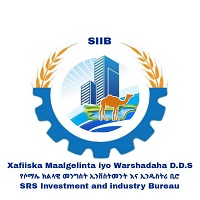Tourism resources
The Somali Region is endowed with a wide variety of natural, cultural and historical tourist attractions. These are briefly discussed below:-
Natural attraction and tourism infrastructure
The Somali Region has plenty of cultural and historical attractions. Among the natural attractions of the region, the major ones are as listed below:-
-
Babile rock valley,
-
The Karamara mountain,
-
The desert landscape and vegetation,
-
Harar-Jigjiga scenic route,
-
Natural hot springs,
-
Forest resources,
-
Rivers, and
-
Wildlife and conservation areas, etc.
The major historical and cultural attractions in the region include:
-
The Welwel Battle field,
-
Funeral sites, and
-
Other cultural and historical attractions.
Visitors to the Somali Region can be categorized into domestic and international tourists. Domestic tourists include Ethiopian nationals and foreign nationals residing in Ethiopia. The international tourists include Djibouti visitors, visitors from neighbouring Somali land and other tourists.
The Somali Region like other backward regions of the country has no accommodation and catering facilities for tourists except the regional capital where modest accommodation and catering services are provided. Accommodation and catering facilities in the remaining zonal towns are for the most part non-existent or are of a very poor quality to be classified as a hotel. Accommodation and catering services should be expanded to meet the demand of tourists.
Historical tourist attraction sites
The Somali Region has a variety of historical heritage that originate chiefly from the importance of the region for archaeological researches and studies on related historical facts. The major historical attractions of the region include Mosques, shrines, market places, caravan, routes, battle fields and similar other sites in various zones of the region. The region played a major role in the medieval as well as the modern history of Ethiopia. Hence, the region has significant attractions sites that can offer a wide opportunity for the development of tourism industry.
Cultural heritage and attractions
The Somali are cattle herding people, and this influences every aspects of their lives. They are pre-dominantly pastoral in sentiment. The Somalis are forced by their cattle herds to be much mobile, as a result areas which at one season of the year are densely populated are deserted at another time.
The Somalis have traditionally divided themselves into the two major lineages of Sab and Somali. The Somali are predominantly nomadic pastrolists, while the Sab constitute a complex of hunter gatherers, agriculturists, and in some cases a pastoral aristocracy dominating Reerbare’s a peasant society and cultivators settled in Kelafo, Mustahele and Imi areas on the banks of Shebelle river. The Reer-bare’s are said to belong to peoples of Bantu speaking origin.
There are also enclaves of (non-Bantu) Sab who are craftsmen such as shoemakers or leather workers Midgan and iron-workers or blacksmiths Tumal or Tomal all necessary but despised vocations in the eye of the pstoralists, who normally would not accept the Sab as equals in marriage or in other social relationships.
